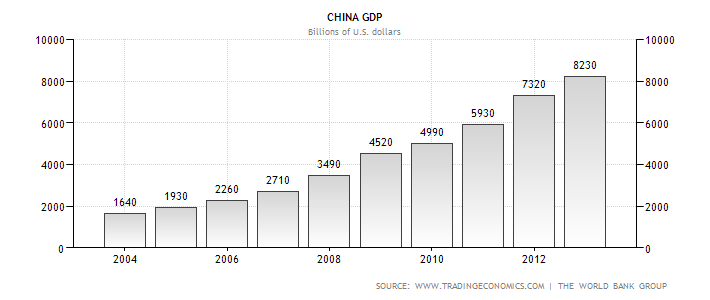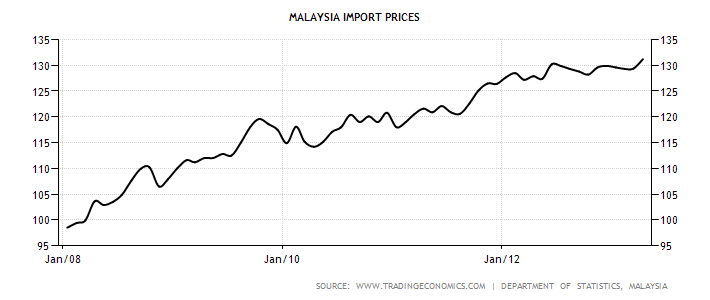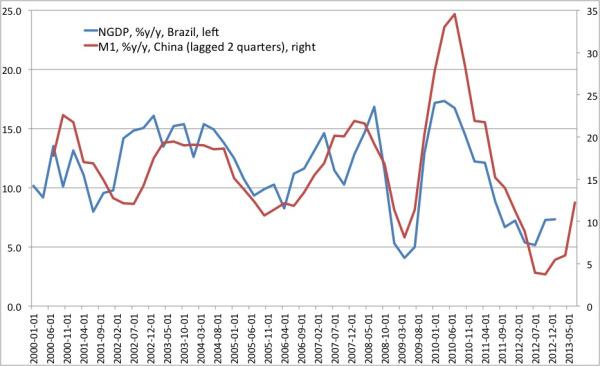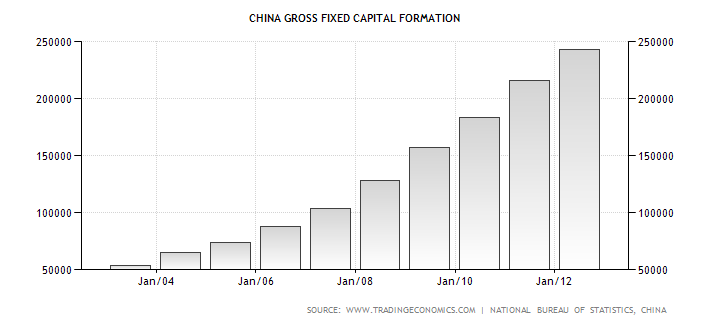The current credit crunch in China is due to PBOC’s (People's Bank Of China) or China's Central Bank refusal to act as the lender of last resort to help banks to get out of their own financial mess. It also demonstrates that Central bank is willing to allow market forces to play a bigger role. This is to mean that banks will have to be on their own since PBOC has indicated that it will not be bailing them out this round. As a result banks have no choice but to be more conservative in their lending policies. What PBOC hope to achieve out of this?
Problem with Shadow Banking System
One reason for not intervening is to punish China’s shadow banking system which according to Fitch Ratings is equivalent to 60% of China’s GDP. Due to the strict lending practices or rather priority of bank loans given to SOEs (State Own Enterprises) there are not much funds left for the private sector. As a result they turned to the illegal or underground money lenders (our Ah Long equivalent) for their borrowings.
Due to the nature of the loans which are short on maturity and expensive in yield, it can present grave problem to China’s economy. Since the Shadow Banking System is out of its jurisdiction they are unable to estimate the extent of the loan exposures and also the portfolio of their customers. It is estimated that many small to medium size developers are getting their finances from them and hence if the economy were to reverse, the authorities afraid they will start liquidating their housing stock to stay afloat. Once the selling begins and when selling begets selling, they afraid the real estate prices will start to collapse.
Cracking Down on Fake Invoices
Another reason for PBOC’s tightening is to get rid of the bulk of the fake invoices coming in from Hong Kong and Taiwan. Fake invoices have always been a thorn in the flesh for the Chinese authorities. It not only reduces the Government tax collection but also helps to inflate the export figures and hence resulted in distorted trade statistics. Due to its control over the Yuan, The State Administration of Foreign Exchange (SAFE) which governs the country’s foreign exchange activities will make it very difficult for foreigners to bring money into China. The reason behind is to be able to control their movement. Say if I would like to buy an apartment in China for the price of $5 million and if I were to go through the normal channel then there will be a long wait and also has to pay a very unfavourable exchange rate.
Hence, to bypass this procedure there is an alternative method whereby the developer can arrange for an exporter to issue me an invoice on something say car tires which I never received. Then I will send them the $5 million plus some extras for their work (commission) in money laundering. Hence I can then purchase my condominium without much hassle but my invoice will be added to the balance of trade and finally the current account in the country’s balance of payments figure. As a result it will help inflate the trade statistics. The following is China’s GDP growth since 2004.

As can be seen China’s GDP has been growing at the rate of about 8% per annum for the past 20 years. However as they found out recently some of the increased has been inflated due to fake invoices.
Should we follow PBOCs Monetary Policy?
In recent years, China has been become increasingly more important to Malaysia in term of trade. It is Malaysia’s largest importer and second largest exporter. The following charts show Malaysia’s trading activity with its partners.
Malaysia Total Imports 2012
|
|
|
|
|
|
Country
|
Import ($Bil)
|
% Share
|
China
|
91.6
|
15.10%
|
Singapore
|
80.48
|
13.30%
|
Japan
|
62.39
|
10.30%
|
USA
|
49.09
|
8.10%
|
Thailand
|
36.31
|
6.00%
|
|
|
|
|
|
|
Malaysia Total Exports 2012
|
|
|
|
|
|
Country
|
Export ($Bil)
|
% Share
|
Singapore
|
95.48
|
13.60%
|
China
|
88.75
|
12.60%
|
Japan
|
82.93
|
11.80%
|
USA
|
60.79
|
8.70%
|
Thailand
|
37.71
|
5.40%
|
|
|
|
Total Trade (Imports + Exports)
|
|
|
|
|
|
Country
|
Imp+Exp ($Bil)
|
|
China
|
180.35
|
|
Singapore
|
169.23
|
|
Japan
|
145.32
|
|
USA
|
109.88
|
|
Thailand
|
74.02
|
|
The above table clearly shows that as of 2012, China is our biggest trading partner and hence we are increasingly dependent on China. The question is should we re-orient our monetary policy towards China’s policy direction. The fact is that we not only have to follow China’s domestic monetary policy but also their external exchange rate policy very closely. Since the Yuan is pegged to the US$ and any downturn in the dollar will also cause the Yuan to depreciate. If our exchange rate policy does not respond to the depreciation of the Yuan then it will automatically affect our exports due to our expensive Ringgit.
We are living in a globalized world and China has many trading partners that supplying almost the same goods and services. Comparative advantage is almost non-existent hence price will be the main determinant for the demand and supply of the goods and services. For example in the electronics sector, Malaysia’s Carsem and Unisem are not the only Semiconductor and Test Services (SATS) players around. There are bigger and more cost-effective players like ASE and Powertech Technology from Taiwan. If the Taiwanese Government responds to China’s Yuan depreciation by doing the same to its NT dollar then products from Taiwan will certainly have a price advantage over us. Thus we have no other choice but to follow.
The reason to follow China’s Yuan’s direction is due to the fact that there is a limitation by central banks to promote both the monetary and exchange rate policy at the same time.
Monetary policy deals with the domestic issues such as price stability, full employment and sustainable economic development.
Exchange rate policy on the other hand deals with the external sector such as sustainable balance of payment, favorable exchange rate regime and also a sustainable foreign reserve position.
Due to the inter connectivity of our globalized world the implementation of policy objective of both monetary and exchange has somehow been converge. For example monetary policy implementation has increasingly dependent on techniques that affect the money supply in the banking system. In trying to achieve monetary targets, central bank will either expand or contract the money supply either through open market operations or interest rate.
As for the exchange rate policy central banks are also increasingly depending on currency intervention. Intervention is a situation where central banks use open market operations to buy and sell foreign currency so as to influence its domestic currency. However such operation will also influence the foreign reserves in the country. This is because when the central bank buys foreign exchange it will need to sell its own currency and similarly when it sells foreign exchange then it is buying its own currency.
The interrelationship between the exchange rate and monetary policy is very complex. To simplify matter we present you the following example. Say for example Bank Negara wishes to promote a tight monetary policy so as to take some heat off the economy. The basic monetary policy tools available are the following.
Open Market Operations (OMO). By this we mean the Central Bank will sell securities to financial institutions to mop up the excess liquidity from the market.
Interest rate hike. When interest rate is hike then the cost of borrowing will increased and hence the demand for money will decrease.
In this case if the hike in interest rate is a policy of choice then naturally it will attract an inflow of capital from international investors which at the same time appreciates the Ringgit and increase our foreign reserves. On the other hand the open market operations of the exchange rate policy which tends to increase or decrease the foreign reserves through the buying and selling of foreign currency. When our Ringgit appreciates then our exports will be more expensive and our imports will be cheaper. Hence this will further deteriorate our exports but at the same time increases our consumption due to the cheaper imports.
Hence exchange rate policy targeting depends on the size of our domestic money market. If our daily currency intervention is large relative to the size of our domestic money market then it is feasible to use it as a domestic monetary policy tool. However such operation can only be performed in an environment called unsterilized foreign exchange intervention due to the size of netting.
Malaysia’s Exchange Rate Targeting
Since China’s Yuan is pegged to the US$ PBOC does not need to intervened too much in its daily exchange rate setting, it can concentrate in its domestic monetary policy. Hence PBOC can now concentrate on its monetary policy to promote internal stability.
Malaysia on the other hand has to target its exchange rate through its managed or dirty float regime and monetary policy. It is very difficult to target both unless Malaysia is willing to ‘free to float’ the Ringgit or lose some sovereignty over it. This means that Malaysia will lose control over the Ringgit and its level will be determined by market forces in the short term. But we doubt Malaysia is willing to do that as with other countries such as Turkey and Brazil as they consider it is too dangerous to let the market decide the exchange rate.
The question is whether Malaysia’s Monetary Policy is increasingly determined by China? That is to mean that whenever China embarked on a either a loose or tight monetary policy then our Bank Negara will have to follow just because China is our largest trading partner. On top of that what will the effects of the current credit crunch in China on Malaysia?
Declining prices in Most Commodities
Malaysia’s Credit Squeeze is a direct result of China’s monetary tightening. Malaysia’s monetary policy is closely tied to China’s due to the large extend of its trade with China. When our exports are dependent on China then naturally our domestic monetary policy will have to readjust according to the monetary conditions in China. Due to the credit crunch in China, Malaysia’s exports to China will likely to be reduced in the coming months and hence this will put pressure into commodity prices as we saw back in the financial crisis in 2008. Commodity prices declined on the average of 40-50% then.
Cost Push Inflation
Our domestic inflation rate should be heading higher in the coming months due to the increase in prices that is caused by the increase in import prices. A lot of our manufactured products have high content of imported components and hence any increase in the import prices will have effects on the prices of the final products.
Our increase in the inflation rate is not due to the increase in our aggregate demand as normally the case. This time it was due to the increase in our import prices because our Ringgit has depreciated quite a fair bit since last December. On our USD/MYR chart below you can see that our ringgit was trading within the range of 2.98 to 3.06 to the dollar. As of this writing (31/07/2013), the Ringgit is trading at 3.25 to the dollar. This represents a depreciation of about 6% to the dollar. Below is USD/MYR chart since 2011.

Import prices has been on the rise since and reached the new high of 131.20 index points in April 2013, from 129.40 index points from March 2013. This can be shown by the following graph.

Interest Rate Hike and Economy Slowdown
Another side effect from the decrease in the money availability is that it will help push the short term interest rate up. We do not expect to see any credit easing from the government anytime soon as they are serious in reigning in the excessive credit expansion from the past. Due to the past policy on credit easing it resulted in an explosion of household debt which is one of the highest in the region standing at 83% to GDP. The following chart shows Malaysia Loans to Private Sector from July 2011 to May 2013.

As you can see the month of May 2013 tops the chart with the total of MYR 1244470.60 billion loan out to the private which includes the household and business. Hence our Government has no choice but to put a hold on further credit easing and as a result there is less money available for loans.
The decrease in money available in the economy leads to a decrease in investment and spending as the availability of capital becomes more expensive to obtain. Banks which have obligations such as to make available funds for the redemption of Wealth Management products will have no choice but to borrow from the interbank market or KLIBOR (Kuala Lumpur Interbank Offer Rates) which is more expensive or through the issuance of new products. Hence with the difficulty in obtaining finances through the interbank market this will help push the interbank rate higher in the short run. This limiting of access to capital also slows down economic growth as investment decreases.
Conclusion
As China is marching ahead to become the largest economy in the world by 2025, we reckoned that before that the Yuan will have to be made fully convertible by then. As can be seen without the concerted efforts of its trade partners even the mighty U.S is not able to muscle through its exchange rate policy over the domestic policy objectives during the Carter Administration in the 1970s.
China’s ability to maintain the stability of the Yuan depends on the future monetary policy direction of its trading partners. China is now promoting what is called the ‘Policy Coordination’ whereby it hoped that to achieve overall policy objectives with participating central banks. By this they will try to make major policy announcement or interventions at about the same time so as to tell the market that they are synchronizing their efforts. As of late there is evidence that China and its trading partners are synchronizing their efforts in the latest round of credit crunch.
According to the Institute of International Finance shows that the credit crunch in China is hitting harder than it is thought. It seems that not only the rest of Asia is suffering but also Latin America. The credit index which shows whether credit is easing or tightening with the 50 point level being in equilibrium. China’s current standing is 45.7 points while the rest of Asia scored 45.2 points and both are in the lowest since 2011.
Another evidence of policy coordination is the performance of the Brazilian economy which is closely following the Chinese economy.

Source : The Monetarist
As can be seen from above, PBOCs influence on the Money Supply M1 has profound effects on the Brazilian NGDP. It looks like the Brazilian NGDP follows closely with the movement of the Chinese Money Supply M1. A growth in the M1 will be followed by growth in the Brazilian NGDP. The relationship is fairly obvious because China is Brazil’s largest trading partner. Hence any monetary policy adjustment from China will have profound effect on Brazilian exports (mostly commodities as in Malaysia). Hence with the current credit crunch in China it will also have profound effect on its consumption of commodities. China being the largest consumer of certain commodities a decline in consumption will certainly have negative effect on its prices. Hence we shall see a downturn in Brazilian exports and also an increase credit in Brazil.
Nevertheless we estimate that the current downturn in the Chinese economy will be short term as its primary objective of the credit crunch is to get rid of the fake invoice scandal and reduce the importance of the Shadow Banking System. Once these issues are settled we should see an upturn in the Chinese economy as soon as the last quarter of 2013. Moreover as many Western analysts have predicted the implosion of the Chinese economy since 2008 we have a different view. As of the indication of where the Chinese economy is heading we present you the following chart which shows China’s Gross fixed capital formation.

As you can see China’s gross fixed capital formation has been increasing from about 51,000 CNY in 2003 to 243151.90 in 2012. So in other words there has been an almost fivefold increase in the last 9 years. Since a nation’s economic growth depends much on its fixed capital formation we are confident that the Chinese economy will be able to grow at least 7.5% per annum for the next 10-15 years.